Bet kurios mechaninės sistemos, ypač dviračių, ilgaamžiškumas ir našumas labai priklauso nuo reguliaraus valymo ir tepimo. Ant įvairių komponentų gali kauptis nešvarumai, purvas ir drėgmė, dėl to jie susidėvi ir gali pakenkti funkcionalumui. Pavyzdžiui, grandinė yra viena iš svarbiausių dviračio dalių; ją reikia reguliariai valyti, kad neatsirastų rūdžių ir būtų užtikrintas sklandus veikimas.
Nešvari grandinė gali lemti prastą pavarų perjungimą ir didesnį grandinės bei krumpliaračių susidėvėjimą. Norint efektyviai išvalyti grandinę, galima naudoti riebalų šalinimo priemonę ir grandinės valymo įrankį, kuris leidžia kruopščiai pašalinti teršalus be didelių pastangų. Po valymo būtina naudoti tinkamą tepalą.
Šlapias tepalas idealiai tinka šlapioms sąlygoms, o sausas tepalas geriau veikia sausoje aplinkoje, nes pritraukia mažiau nešvarumų. Be grandinės, kitus komponentus, tokius kaip pavarų perjungikliai, stabdžių suportai ir sukimosi taškai, taip pat naudinga reguliariai valyti ir tepti. Pavyzdžiui, pavarų perjungiklio sukimosi taškai gali tapti lipnūs, jei jie nebus prižiūrimi, todėl pavaros persijungs lėtai.
Paprastas nuvalymas švaria šluoste ir keli lašai tepalo gali atkurti jų funkcionalumą. Be to, stabdžių trosus reikia patikrinti ir sutepti, kad jie laisvai judėtų savo korpuse. Tai ne tik pagerina stabdymo efektyvumą, bet ir pailgina pačių trosų tarnavimo laiką.
Reguliarus valymas ir tepimas sukuria apsauginį barjerą nuo korozijos ir nusidėvėjimo, užtikrindami, kad dviratis daugelį metų išliktų optimalios būklės.
Svarbiausios išvados
- Reguliarus dviračio dalių valymas ir tepimas yra būtinas sklandžiam ir efektyviam veikimui.
- Tinkama akumuliatoriaus priežiūra ir techninė priežiūra yra labai svarbi norint užtikrinti ilgesnį tarnavimo laiką ir patikimą veikimą.
- Reguliarus padangų tikrinimas ir tinkamo padangų slėgio palaikymas yra svarbūs saugumui ir optimaliam našumui.
- Stabdžių reguliavimas ir kaladėlių keitimas turėtų būti atliekami reguliariai, siekiant užtikrinti efektyvų stabdymą ir saugumą.
- Sklandžiam pavarų perjungimui ir efektyviam važiavimui būtina patikrinti ir sureguliuoti pavaras.
- Reguliarus elektros komponentų tikrinimas yra svarbus siekiant užtikrinti tinkamą veikimą ir saugumą važiuojant.
Baterijos priežiūra ir techninė priežiūra
Gilaus iškrovimo vengimas
Norint užtikrinti elektrinių dviračių ilgaamžiškumą ir patikimą veikimą, labai svarbu tinkamai prižiūrėti akumuliatorių. Vienas iš svarbiausių akumuliatoriaus priežiūros aspektų – vengti gilaus išsikrovimo. Patartina akumuliatorių įkrauti, kai jis pasiekia maždaug 20% talpą, o ne leisti jam visiškai išsikrauti. Ši praktika padeda palaikyti akumuliatoriaus būklę ir apsaugo nuo galimos žalos dėl per didelio išsikrovimo.
Optimalių laikymo sąlygų palaikymas
Idealiu atveju nenaudojamas baterijas reikėtų laikyti vėsioje, sausoje vietoje. Reguliarus baterijos gnybtų tikrinimas dėl korozijos yra dar vienas svarbus priežiūros žingsnis. Korozijos pažeisti gnybtai gali sukelti prastą jungtį ir sumažinti galią. Jei yra korozijos, ją galima valyti kepimo sodos ir vandens mišiniu, po to kruopščiai išdžiovinti prieš surenkant.
Įkrovimas ir ciklų skaičius
Be to, svarbu naudoti tinkamą įkroviklį, specialiai sukurtą akumuliatoriaus tipui; naudojant nesuderinamą įkroviklį, akumuliatorius gali būti perkrautas arba per mažai, o tai gali sutrumpinti jo veikimo laiką. Akumuliatoriaus ciklų skaičiaus stebėjimas – kiek kartų jis buvo įkrautas – taip pat gali suteikti informacijos apie jo būklę. Dauguma ličio jonų akumuliatorių tarnauja apie 500–1000 įkrovimo ciklų, po kurių jų talpa gali gerokai sumažėti.
Padangų patikra ir slėgis
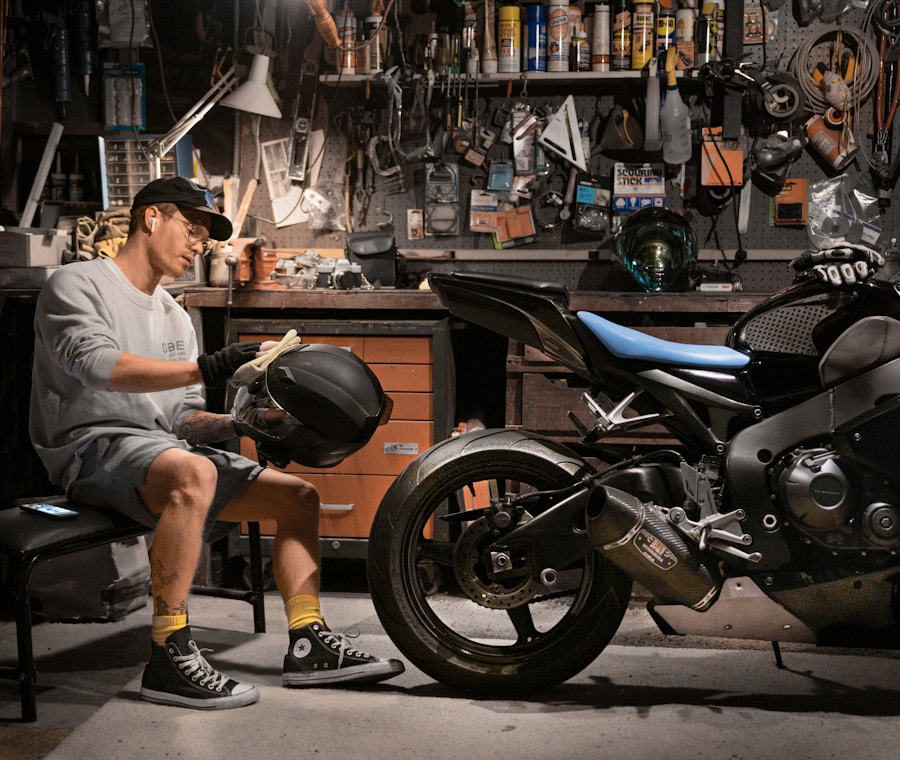
Padangos yra vienas svarbiausių bet kurio dviračio komponentų, tiesiogiai veikiantis saugumą ir našumą. Reguliariai tikrinant padangas reikėtų patikrinti, ar nėra susidėvėjimo požymių, tokių kaip įtrūkimai, išsipūtimai ar įsisenėjusios šiukšlės, dėl kurių padanga gali pradurti. Vizualinė apžiūra dažnai gali atskleisti problemas, kurios įprastų važiavimų metu gali būti ne iš karto pastebimos.
Pavyzdžiui, jei padanga nevienodai nusidėvi, tai gali reikšti netinkamą padangų pripūtimą arba neteisingą ratų suvedimą. Tokiais atvejais laiku pašalinus šias problemas galima išvengti tolesnės žalos ir padidinti važiavimo saugumą. Tinkamas padangų slėgis yra ne mažiau svarbus optimaliam našumui.
Per mažai pripūstos padangos gali padidinti riedėjimo pasipriešinimą, todėl minti pedalus bus sunkiau ir sumažės bendras efektyvumas. Ir atvirkščiai, per daug pripūstos padangos gali sukelti grubų važiavimą ir padidinti padangos sprogimo riziką. Rekomenduojamas slėgio diapazonas paprastai yra atspausdintas ant padangos šoninės sienelės; laikantis šių rekomendacijų užtikrinamas tinkamas padangų veikimas.
Patikimas grindų siurblys su įmontuotu slėgio matuokliu gali palengvinti reguliarius patikrinimus ir reguliavimą. Patartina padangų slėgį tikrinti bent kartą per mėnesį arba prieš ilgas keliones, kad įsitikintumėte, jog jis yra optimaliame diapazone.
Stabdžių reguliavimas ir kaladėlių keitimas
| Transporto priemonės tipas |
Stabdžių reguliavimo dažnis |
Padų keitimo dažnis |
| Sedanas |
Kas 20 000 mylių |
Kas 40 000 mylių |
| Sunkvežimis |
Kas 15 000 mylių |
Kas 30 000 mylių |
| Visureigis |
Kas 18 000 mylių |
Kas 35 000 mylių |
Stabdžiai yra bene viena svarbiausių dviračio saugos funkcijų, todėl reguliarus reguliavimas ir priežiūra yra būtini norint saugiai važiuoti. Laikui bėgant, stabdžių kaladėlės susidėvi dėl trinties į ratlankius ar rotorius, todėl jas reikia periodiškai tikrinti, ar nėra susidėvėjimo indikatorių. Jei kaladėlės atrodo plonos arba netolygiai susidėvėjusios, jas reikia nedelsiant pakeisti, kad būtų išlaikyta efektyvi stabdymo galia.
Stabdžių kaladėlių keitimo procesas skiriasi priklausomai nuo to, ar dviratis naudoja ratlankius, ar diskinius stabdžius; tačiau abiem atvejais reikia atidžiai stebėti tinkamą suvedimą ir veikimą. Be kaladėlių keitimo, optimaliam veikimui labai svarbus stabdžių sureguliavimas. Ratlankių stabdžių atveju tai reiškia, kad reikia užtikrinti, jog kaladėlės tiksliai liestųsi su ratlankiu ir kad tarp kaladėlių ir padangos būtų pakankamas tarpas, kai jos neįjungtos.
Dėl netinkamo suvedimo gali suprastėti stabdymo efektyvumas arba net būti pažeista padanga. Diskinių stabdžių atveju labai svarbu patikrinti rotoriaus suvedimą; sulenktas rotorius gali sukelti trintį į stabdžių kaladėles, dėl to sumažėja efektyvumas ir padidėja abiejų komponentų susidėvėjimas. Reguliariai reguliuojant stabdžių trosus arba hidraulines sistemas užtikrinama, kad stabdžiai įsijungtų sklandžiai, per daug netraukiant svirties.
Pavarų tikrinimas ir reguliavimas
Dviračio pavarų sistema atlieka gyvybiškai svarbų vaidmenį užtikrinant efektyvų važiavimą, nes leidžia dviratininkams pritaikyti mynimo pastangas pagal reljefo sąlygas. Norint užtikrinti sklandų perjungimą ir optimalų našumą, būtina reguliariai tikrinti ir reguliuoti pavaras. Viena dažna problema yra trosų tempimas; laikui bėgant, pavarų trosai gali išsitempti arba suplyšti, todėl pavaros perjungiamos netiksliai.
Reguliarios patikros turėtų apimti troso įtempimo tikrinimą ir jo sureguliavimą pagal poreikį naudojant cilindrinius reguliatorius, esančius ant pavarų perjungiklių arba pavarų perjungiklių. Kitas pavarų priežiūros aspektas yra pavarų perjungiklio sulygiavimo patikrinimas. Jei pavarų perjungiklis netinkamai suderintas, jam gali būti sunku tinkamai perjungti pavaras arba netgi grandinė gali šokinėti.
Norint patikrinti išlygiavimą, galima stebėti, kaip gerai grandinė juda per pavaras; jei ji užstringa arba netikėtai praleidžia pavaras, gali tekti jas sureguliuoti. Tiksliai reguliuojami ribojimo varžtai ant pavarų perjungiklių užtikrina, kad grandinė nepersijungtų per daug ar per mažai už numatyto pavarų diapazono ribų. Reguliarus pavarų aptarnavimas ne tik pagerina perjungimo našumą, bet ir pailgina grandinės bei kasetės tarnavimo laiką.
Reguliarus elektros komponentų patikrinimas

Šiuolaikiniams dviračiams su elektriniais komponentais, tokiais kaip žibintai, ekranai ar el. dviračių sistemos, reguliari apžiūra yra labai svarbi siekiant užtikrinti jų veikimą ir saugumą. Elektros sistemos dažnai yra veikiamos įvairių aplinkos veiksnių, tokių kaip drėgmė ir nešvarumai, kurie, jei netinkamai prižiūrimi, gali sukelti koroziją ar trumpuosius jungimus. Reguliariai tikrinant jungtis, ar nėra susidėvėjimo ar korozijos požymių, galima išvengti elektros gedimų važiavimo metu.
Pavyzdžiui, užtikrinus, kad visos jungtys yra švarios ir tvirtai pritvirtintos, galima sumažinti problemas, susijusias su protarpiniu elektros energijos tiekimo praradimu. Be to, labai svarbu patikrinti laidus, ar jie nėra nutrūkę ar pažeisti; atviri laidai gali kelti pavojų ne tik dviračio, bet ir vairuotojo saugumui. Jei aptinkama kokių nors pažeidimų, patartina nedelsiant pakeisti arba sutaisyti laidus, kad būtų išvengta tolesnių komplikacijų.
Reguliariai tikrinant elektrinius komponentus, tokius kaip žibintai ar ekranai, užtikrinama, kad jie veiktų tinkamai, kai to labiausiai reikia – ypač esant prastam apšvietimui arba nepalankiu oru. Elektrinių komponentų švara ir priežiūra labai prisideda prie bendro dviračio saugumo ir patikimumo, tuo pačiu pagerindama važiavimo patirtį dėl nuoseklaus veikimo.
DUK
Kokie yra pagrindiniai elektrinio dviračio priežiūros darbai?
Kai kurios pagrindinės elektrinio dviračio priežiūros užduotys apima akumuliatoriaus įkrovos palaikymą, padangų slėgio tikrinimą, grandinės sutepimą ir visų elektros jungčių tvirtumą.
Kaip dažnai turėčiau įkrauti savo elektrinio dviračio akumuliatorių?
Rekomenduojama įkrauti elektrinio dviračio akumuliatorių po kiekvieno važiavimo, ypač jei akumuliatoriaus talpa mažesnė nei 50%. Taip pat svarbu akumuliatorių pilnai įkrauti bent kartą per mėnesį, net jei jis nebuvo naudojamas.
Kaip turėčiau valyti savo elektrinį dviratį?
Elektrinį dviratį galite valyti švelniu plovikliu ir vandeniu, nuvalydami rėmą, ratus ir kitus komponentus. Venkite naudoti aukšto slėgio vandens srovę ar purkšti tiesiai ant elektrinių komponentų.
Ką daryti, jei mano elektriniam dviračiui pradurta padanga?
Jei jūsų elektrinio dviračio padanga pradurta, galite ją sutaisyti patys naudodami padangų remonto rinkinį arba nuvežti dviratį į dviračių parduotuvę profesionaliai pagalbai. Svarbu reguliariai tikrinti padangų slėgį, kad išvengtumėte pradurimų.
Kaip galiu prailginti savo elektrinio dviračio tarnavimo laiką?
Norint pailginti elektrinio dviračio tarnavimo laiką, svarbu reguliariai atlikti priežiūros darbus, tokius kaip valymas, judančių dalių tepimas ir patikrinimas, ar nėra atsilaisvinusių ar susidėvėjusių komponentų. Be to, dviračio laikymas sausoje ir vėsioje aplinkoje gali padėti išvengti korozijos ir pažeidimų.
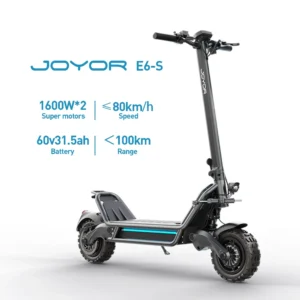 JOYOR E6-S elektrinis paspirtukas, 80 km/h, 72 V, 31,5 Ah baterija, 100 km atstumas, 3200 W, dvigubas galingas variklis, 11 colių, sulankstomas vakuuminis paspirtukas
3 × 2 387,47 €
JOYOR E6-S elektrinis paspirtukas, 80 km/h, 72 V, 31,5 Ah baterija, 100 km atstumas, 3200 W, dvigubas galingas variklis, 11 colių, sulankstomas vakuuminis paspirtukas
3 × 2 387,47 € 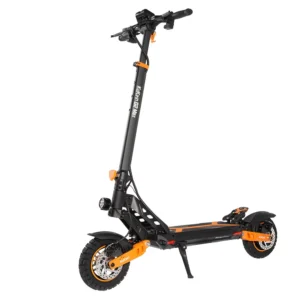 „KuKirin G2 MAX“ suaugusiųjų elektrinis paspirtukas, 48 V, 20,8 Ah baterija, didžiausia 1200 W variklis, 55 km/h greitis, maksimalus nuvažiuojamas atstumas, 80 km, 10 colių padangos, sulankstomas elektrinis paspirtukas
3 × 1 066,54 €
„KuKirin G2 MAX“ suaugusiųjų elektrinis paspirtukas, 48 V, 20,8 Ah baterija, didžiausia 1200 W variklis, 55 km/h greitis, maksimalus nuvažiuojamas atstumas, 80 km, 10 colių padangos, sulankstomas elektrinis paspirtukas
3 × 1 066,54 €  OOTD S10 suaugusiųjų elektrinis paspirtukas 48V20AH baterija 1400W variklis 55km/h maksimalus greitis elektrinis paspirtukas 10 colių tyli padanga sulankstomas paspirtukas
2 × 850,49 €
OOTD S10 suaugusiųjų elektrinis paspirtukas 48V20AH baterija 1400W variklis 55km/h maksimalus greitis elektrinis paspirtukas 10 colių tyli padanga sulankstomas paspirtukas
2 × 850,49 € 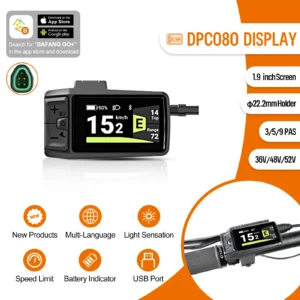 BAFANG E-Bike DPC080 ekranas LCD ekranas prietaisų skydelis viduryje montuojamas variklis, skirtas Bafang CAN protokolo variklio priedams
1 × 79,65 €
BAFANG E-Bike DPC080 ekranas LCD ekranas prietaisų skydelis viduryje montuojamas variklis, skirtas Bafang CAN protokolo variklio priedams
1 × 79,65 € 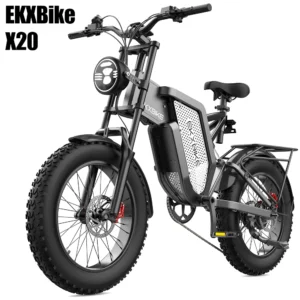 EKXBike elektrinis dviratis X20 2000 W galingas variklis 48V35AH vyriškas plento elektrinis dviratis 20" Fat padanga kalnų elektrinis mopedas suaugusiems
1 × 2 809,93 €
EKXBike elektrinis dviratis X20 2000 W galingas variklis 48V35AH vyriškas plento elektrinis dviratis 20" Fat padanga kalnų elektrinis mopedas suaugusiems
1 × 2 809,93 € 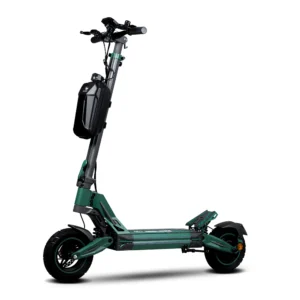 HONEYWHALE G2 Pro elektrinis paspirtukas, 900 W variklis, 54,6 V, 16 Ah baterija, 45 km atstumas, 40 km/h greitis, dviguba amortizacinė spyruoklė.
2 × 862,34 €
HONEYWHALE G2 Pro elektrinis paspirtukas, 900 W variklis, 54,6 V, 16 Ah baterija, 45 km atstumas, 40 km/h greitis, dviguba amortizacinė spyruoklė.
2 × 862,34 €  GOOLOO GP4000 PRO automobilio užvedimo įrenginys, 4000A maksimali galia, 26800mAh, išorinė baterija, automobilio maitinimo šaltinis, 15V, 10A nuolatinės srovės išvestis, 1W, baltas LED, 10L dyzelinas
1 × 151,93 €
GOOLOO GP4000 PRO automobilio užvedimo įrenginys, 4000A maksimali galia, 26800mAh, išorinė baterija, automobilio maitinimo šaltinis, 15V, 10A nuolatinės srovės išvestis, 1W, baltas LED, 10L dyzelinas
1 × 151,93 € 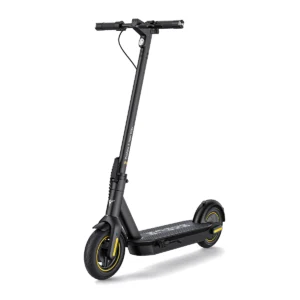 ENGWE Y10 elektrinis paspirtukas suaugusiems, 10 colių pneumatinės padangos, 500 W variklis, 32 m/h maksimalus greitis, 36 V 13 Ah baterija, 65 km atstumas
2 × 626,73 €
ENGWE Y10 elektrinis paspirtukas suaugusiems, 10 colių pneumatinės padangos, 500 W variklis, 32 m/h maksimalus greitis, 36 V 13 Ah baterija, 65 km atstumas
2 × 626,73 € 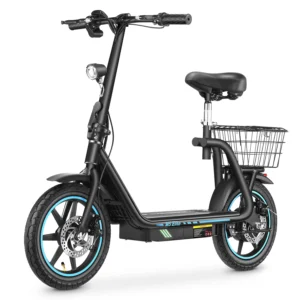 M5 Elite elektrinis paspirtukas, 750 W variklis, 48 V, 13 Ah baterija, 45 km maksimalus nuvažiuojamas atstumas, 40 km/h greitis, 14 colių padanga, sulankstoma sėdynė, suaugusiųjų paspirtukas-kick
1 × 916,69 €
M5 Elite elektrinis paspirtukas, 750 W variklis, 48 V, 13 Ah baterija, 45 km maksimalus nuvažiuojamas atstumas, 40 km/h greitis, 14 colių padanga, sulankstoma sėdynė, suaugusiųjų paspirtukas-kick
1 × 916,69 € 


